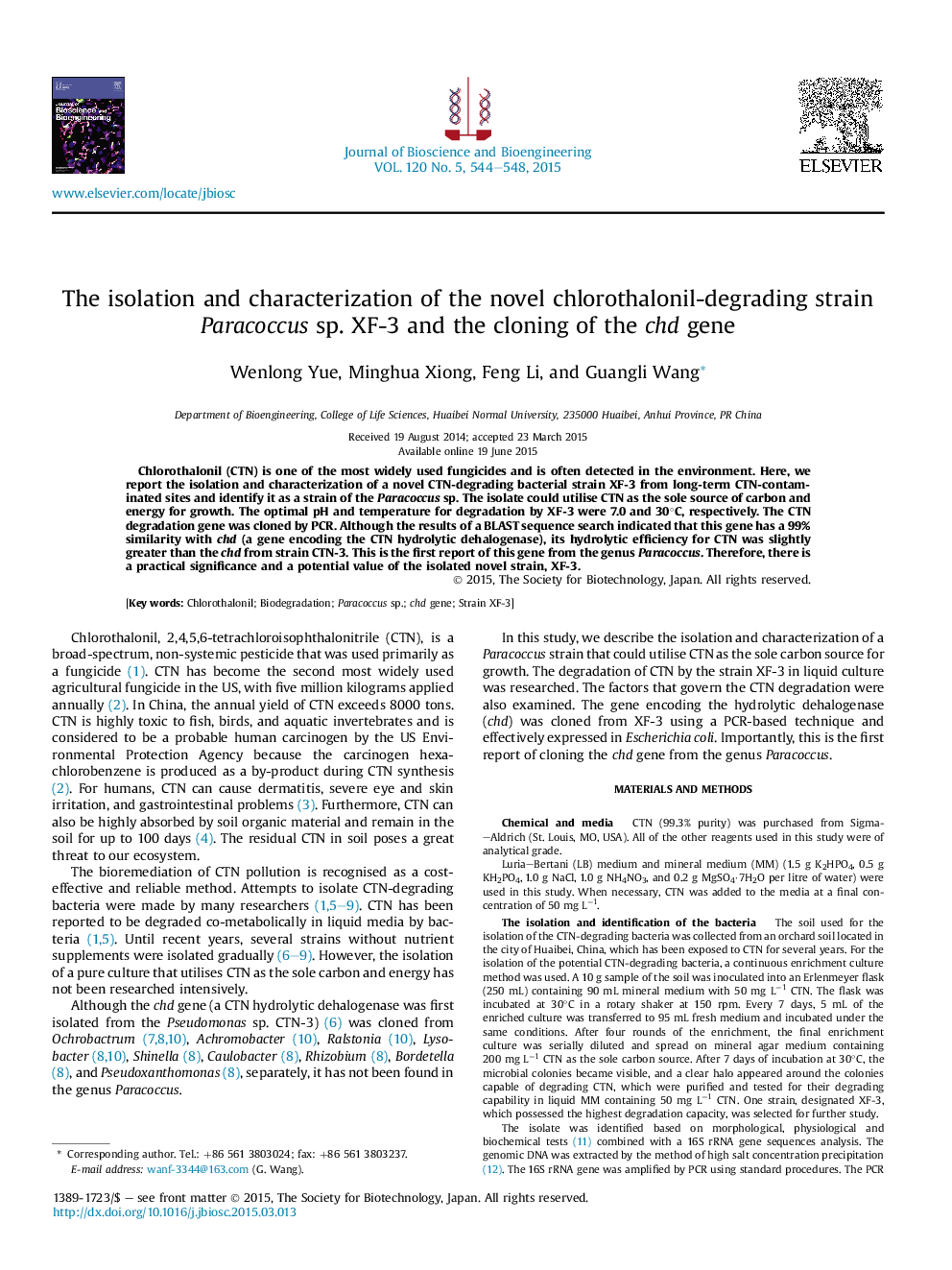| Article ID | Journal | Published Year | Pages | File Type |
|---|---|---|---|---|
| 20173 | Journal of Bioscience and Bioengineering | 2015 | 5 Pages |
Chlorothalonil (CTN) is one of the most widely used fungicides and is often detected in the environment. Here, we report the isolation and characterization of a novel CTN-degrading bacterial strain XF-3 from long-term CTN-contaminated sites and identify it as a strain of the Paracoccus sp. The isolate could utilise CTN as the sole source of carbon and energy for growth. The optimal pH and temperature for degradation by XF-3 were 7.0 and 30°C, respectively. The CTN degradation gene was cloned by PCR. Although the results of a BLAST sequence search indicated that this gene has a 99% similarity with chd (a gene encoding the CTN hydrolytic dehalogenase), its hydrolytic efficiency for CTN was slightly greater than the chd from strain CTN-3. This is the first report of this gene from the genus Paracoccus. Therefore, there is a practical significance and a potential value of the isolated novel strain, XF-3.
